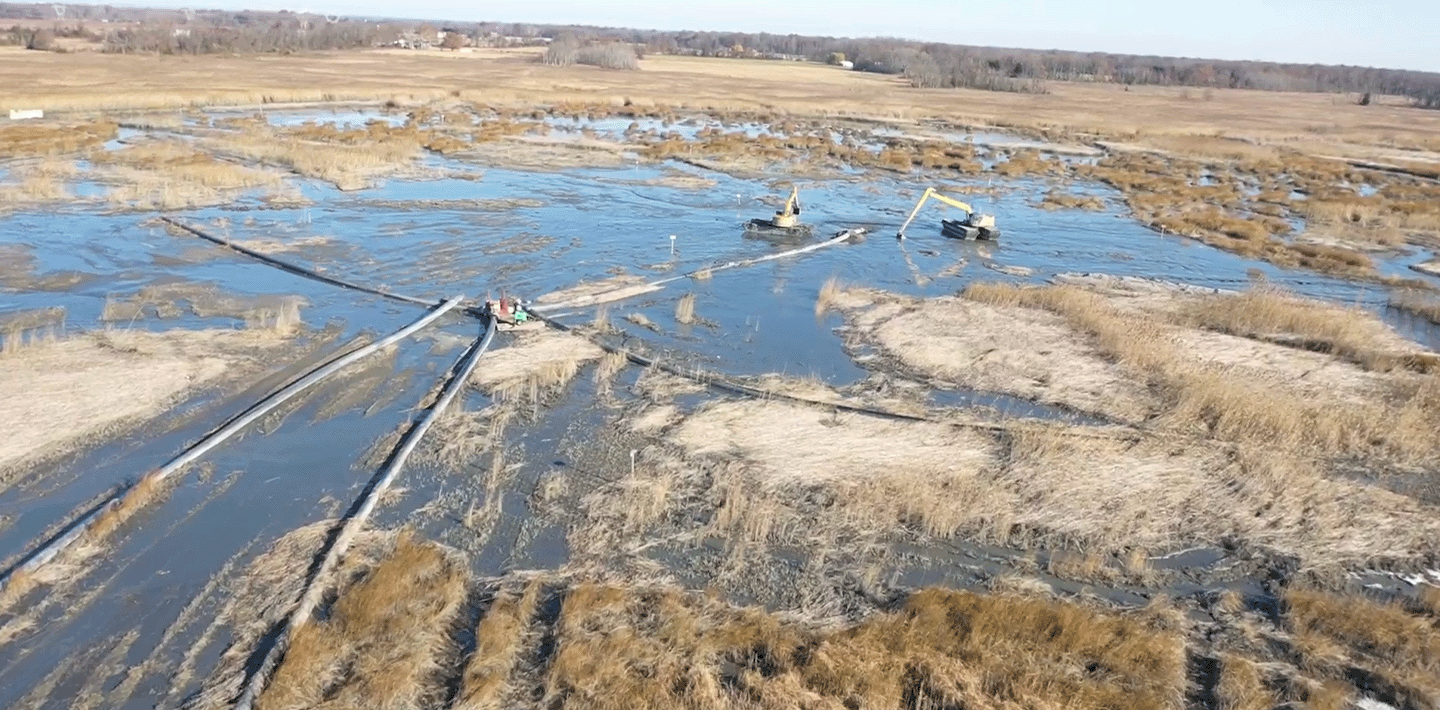Sediment as a Resource
Through a multi-agency partnership, the New Jersey Department of Environmental Protection, Division of Fish and Wildlife (NJDEP), in partnership with the New Jersey Department of Transportation’s Office of Maritime Resources (NJDOT) proposed the beneficial use of sediment from construction of a new wind port, which required navigable waterways to serve the emerging offshore wind industry.
WSP designed the dredging and restoration from conceptual design through full engineering design and permit approvals to hydraulically pump the sediment five miles to the project site. The project goals included raising the marsh elevation, re-establishing tidal marsh vegetation, increasing sedimentation rates, facilitating marsh migration and climate change adaptation, and prioritizing a matrix approach to habitat restoration that supports critical avian species.
WSP coordinated across several public agencies and utilities through the entire development and regulatory approvals process, including NJDEP, NJDOT, New Jersey Economic Development Authority, Public Service Electric & Gas Company and U.S. Army Corps of Engineers.
Abbotts Meadow placement area 1 post invasive species clearing. A partnership among New Jersey’s Department of Transportation, Department of Environmental Protection, and its Economic Development Agency is working to secure the area’s future.
Species First Restoration
Working with New Jersey Fish and Wildlife, the proposed project took a “species first” approach to the restoration design, incorporating unique features to support northern harrier and black rail habitat. WSP performed multiple pre-design studies to understand the ecological, biological and physical processes of the project area and regional landscape.
The design applied a matrix approach to restoration and included a mix of high marsh, low marsh, scrub-shrub, forest wetland buffer areas and slower channels. WSP worked with NJDEP to identify unique and sensitive bird species that would benefit from a restored site and incorporated species-specific habitat features and native plantings into the design to support elevated nesting activities.
The project undertook extensive hydrologic and hydraulic modeling and incorporated sea level rise analysis to inform target elevations and anticipated higher level of saturation and flooding. Phase II planting will begin in 2025.
NJDEP and NJDOT seek to replicate this project at other wetland management sites in New Jersey and to be a model for ecological restoration that also advances the State’s clean energy transition and decarbonization goals.

Pumping during the construction phase to raise the marsh elevation by six feet to support native vegetation and restore sensitive bird habitat.















